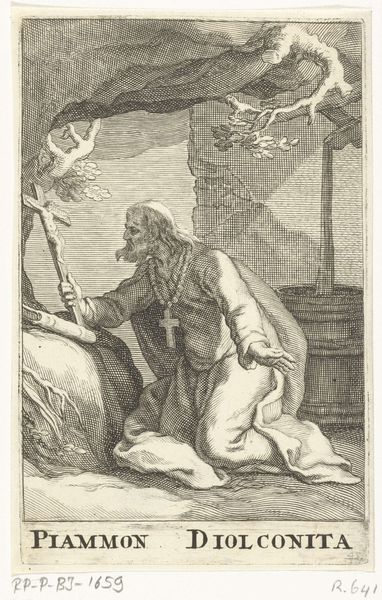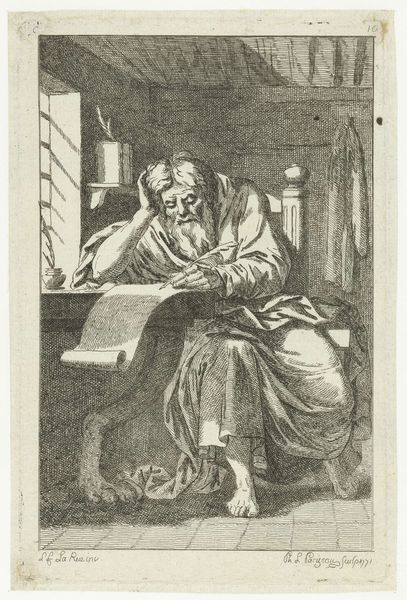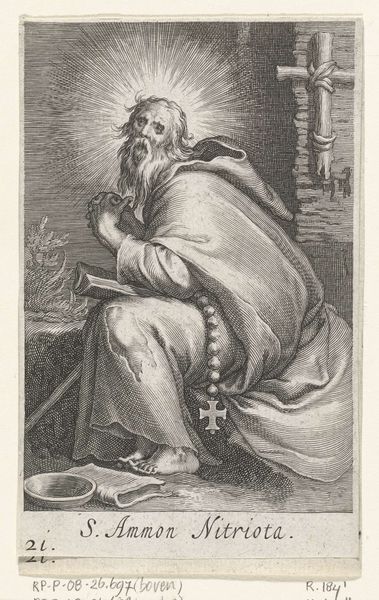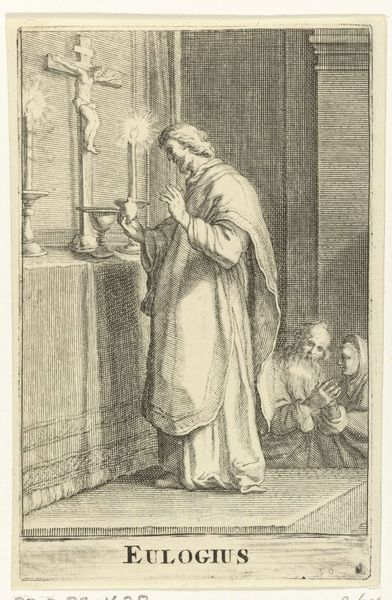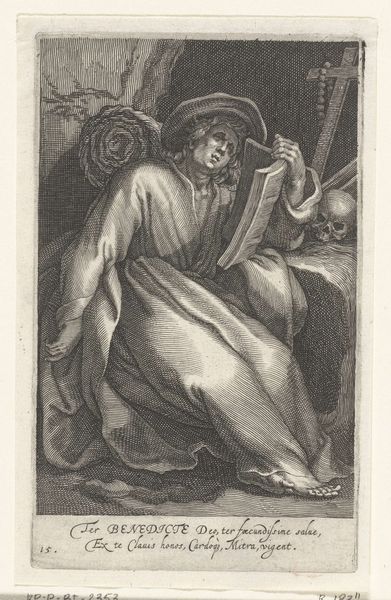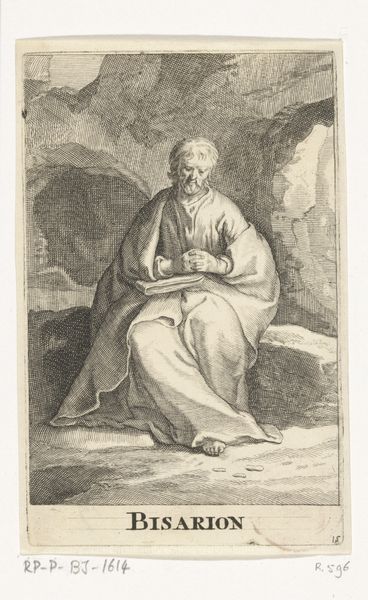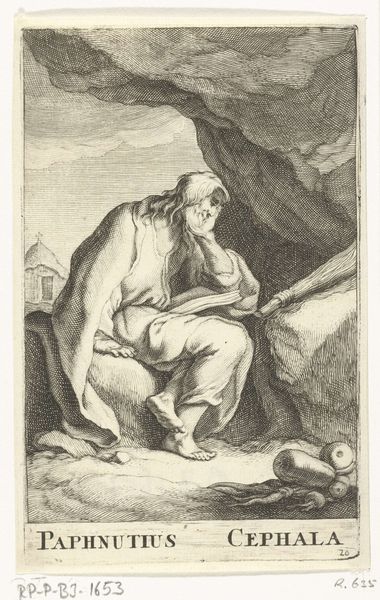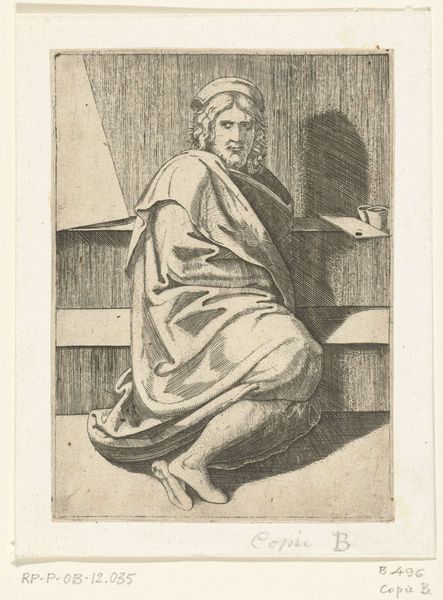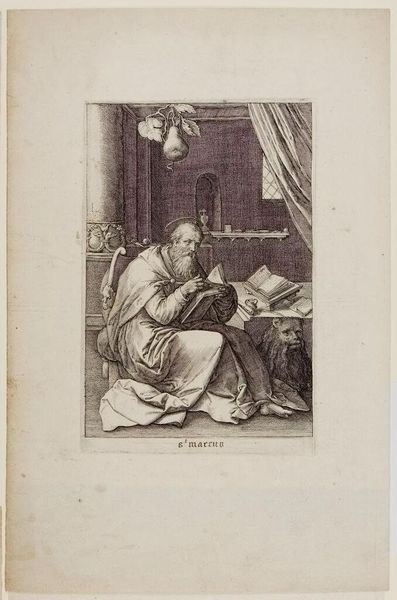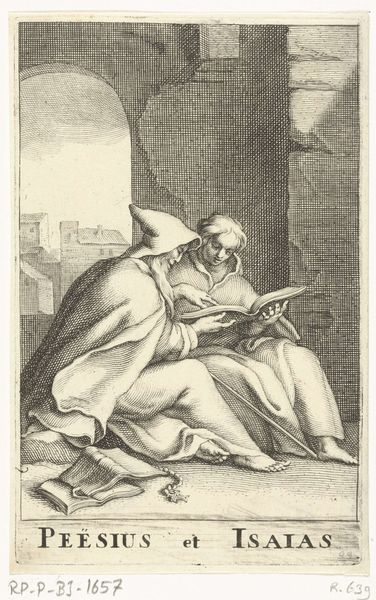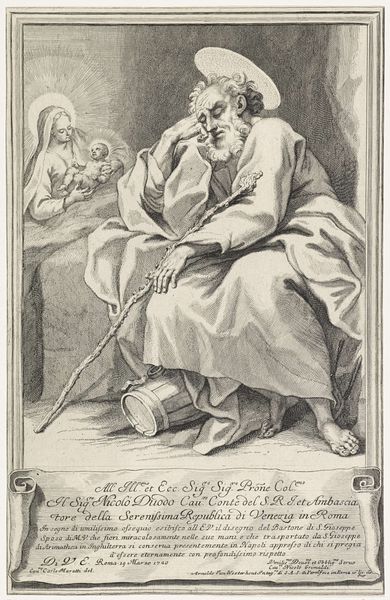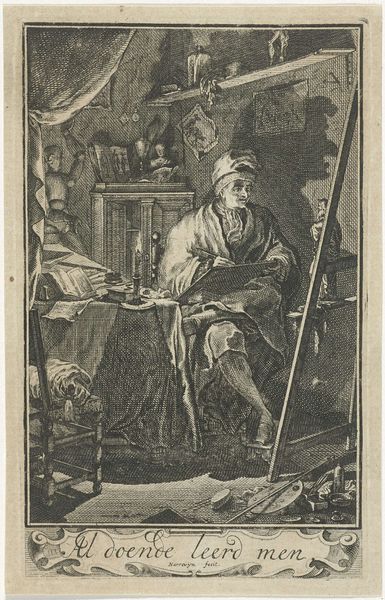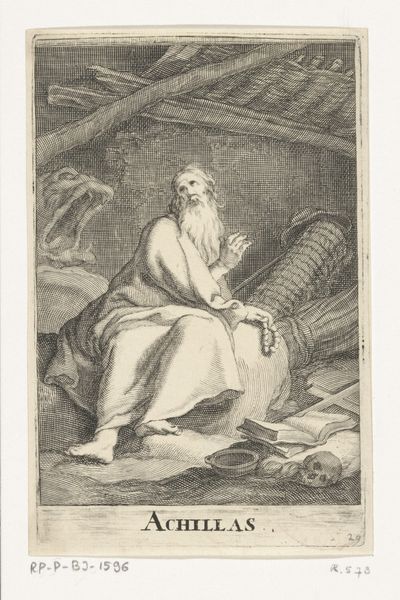
print, engraving
#
portrait
#
baroque
# print
#
old engraving style
#
figuration
#
chiaroscuro
#
history-painting
#
engraving
Dimensions: height 135 mm, width 85 mm
Copyright: Rijks Museum: Open Domain
Curator: Here we have Frederick Bloemaert's engraving, "Heilige Philoromus Galata," created after 1636. It’s currently housed here at the Rijksmuseum. Editor: It's somber. Stark. The use of line creates a really heavy mood, doesn’t it? Almost oppressive. Curator: The density of the engraving is remarkable, especially considering the tools of the time. Note the controlled, precise lines creating that chiaroscuro effect characteristic of the Baroque. Bloemaert clearly understood how to manipulate light through the medium. What processes might workshops of the time develop to get to such details? Editor: I am mostly drawn to the compositional balance. The figure, tomb, and architecture create vertical planes within a very shallow picture plane, lending a stacked appearance overall. Look at how the lines converge to highlight Philoromus's gaze—almost as if directing our own. What's he looking at so intently? Curator: It suggests contemplation, perhaps on mortality, considering the skull and bones above the tomb. The tools employed – copper plates and burins – would dictate a laborious, deliberate pace, and the distribution through printmaking made it accessible beyond elite circles. Who consumed such prints, and what purpose did they serve beyond mere aesthetics? Editor: Right. Think about the lines defining his face—the depth of age etched there, mirroring the lines etched into the plate itself. The very material tells a story of time and decay. Curator: Exactly, and the print medium facilitates that broad circulation, so its availability opens avenues of faith or reflection for a far larger audience. We also ought to note that engravings can often serve to further spread painterly invention and technique across borders; How does Bloemaert bring techniques from painting to printmaking, expanding creative industries? Editor: It's interesting how this artwork, so tied to a specific historical process, still communicates universal themes about time and memory. That linearity of form lends to the piece. Curator: Absolutely. Thinking about Bloemaert's "Heilige Philoromus Galata" expands our understanding of the material culture of 17th century art. Editor: Agreed, seeing through both a formal and historical lens allows us a richer appreciation of its technical virtuosity.
Comments
No comments
Be the first to comment and join the conversation on the ultimate creative platform.
